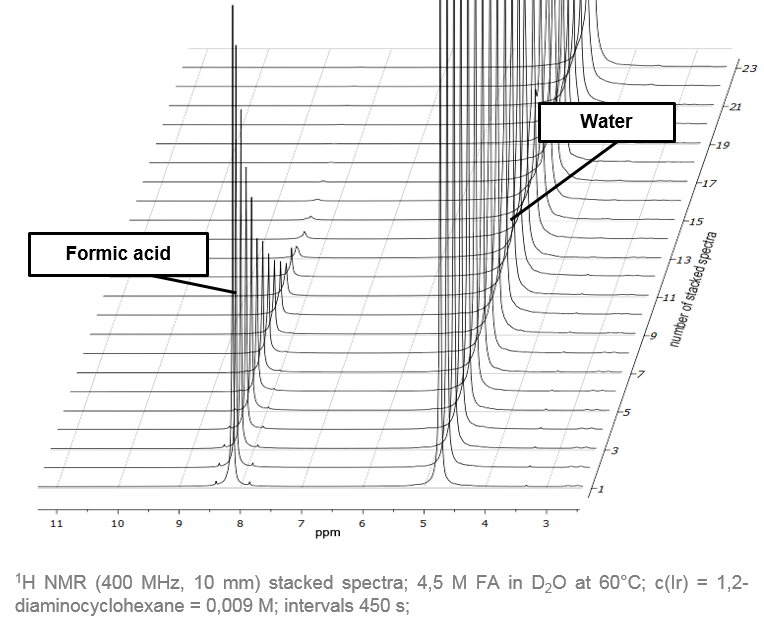Carbon Dioxide as Versatile Hydrogen Storage Vector
The combustion of fossil energy reserves releases the stored carbon as CO2, which was identified to be most responsible for global warming and the greenhouse effect.[1] Molecular hydrogen, produced with renewable energy sources, offers a viable alternative as energy vector. Hydrogen, when chemically bound to certain molecules, avoids many hazards linked to free hydrogen gas and the products exhibit a series of other advantages such as a higher volumetric density, easy to handle, etc. The catalytic reduction of CO2 under mild conditions with homogeneous catalysts to formic acid is a promising solution for save hydrogen storage.[2, 3] Numerous catalysts are known to either bind (hydrogenation) or release (dehydrogenation) H2 with high turnover numbers (TON) on demand.[4, 5] Several PEM fuel cells allow the direct utilization of the H2/CO2 mixture and the afterwards released CO2 can be recycled to obtain a carbon neutral hydrogen battery.[6,7]
An excellent group of catalysts are iridium complexes with the general formula [Cp*Ir(N,N’)Cl]X, where Cp* is a cyclopentadienyl moiety, X a counter ion and N,N’ are part of a bidentate nitrogen donor ligand. Our researched aimed to identify a more powerful catalyst from this group by systematically introducing N,N’ ligands with different steric and electronic properties. We determined characteristic numbers such as turn over frequency, kinetic and mechanistic information and activation energy to describe our catalytic systems accurately.[8]
Acknowledgement: EPFL and SCCER are thanked for financial support.

[1] M. McGee. “Earth’s CO2 Home Page”. 2017 [cited 2017 26.April]; https://www.co2.earth.
[2] C. Fink, S. Katsyuba, G. Laurenczy, PCCP 2016, 18, 10764-10773.
[3] S. Moret, P.J. Dyson, G. Laurenczy, Nat Commun 2014, 5, http://dx.doi.org/10.1038/ncomms5017
[4] C. Fink, M. Montandon-Clerc, G. Laurenczy, CHIMIA 2015.
[5] A. Boddien, D. Mellmann, R. Jackstell, Science 2011, 333, 1733-1736.
[6] A.F. Dalebrook, W. Gan, M. Grasemann, S. Moret, Chem Commun 2013, 49, 8735-8751.
[7] A. Boddien, C. Federsel, D. Mellmann, Energy & Environmental Science 2012, 5, 8907-8911.
[8] C. Fink, G. Laurenczy, Dalton Transactions 2017, 46, 1670-1676.